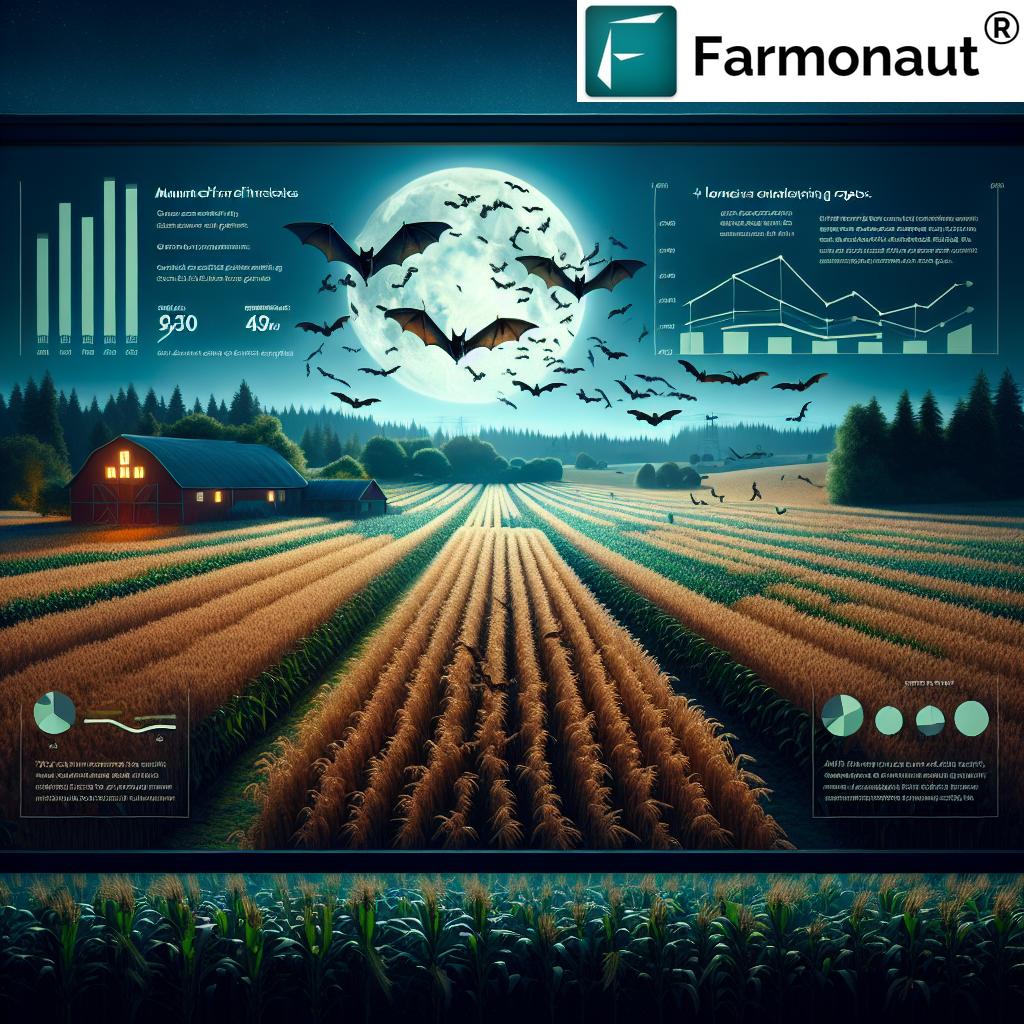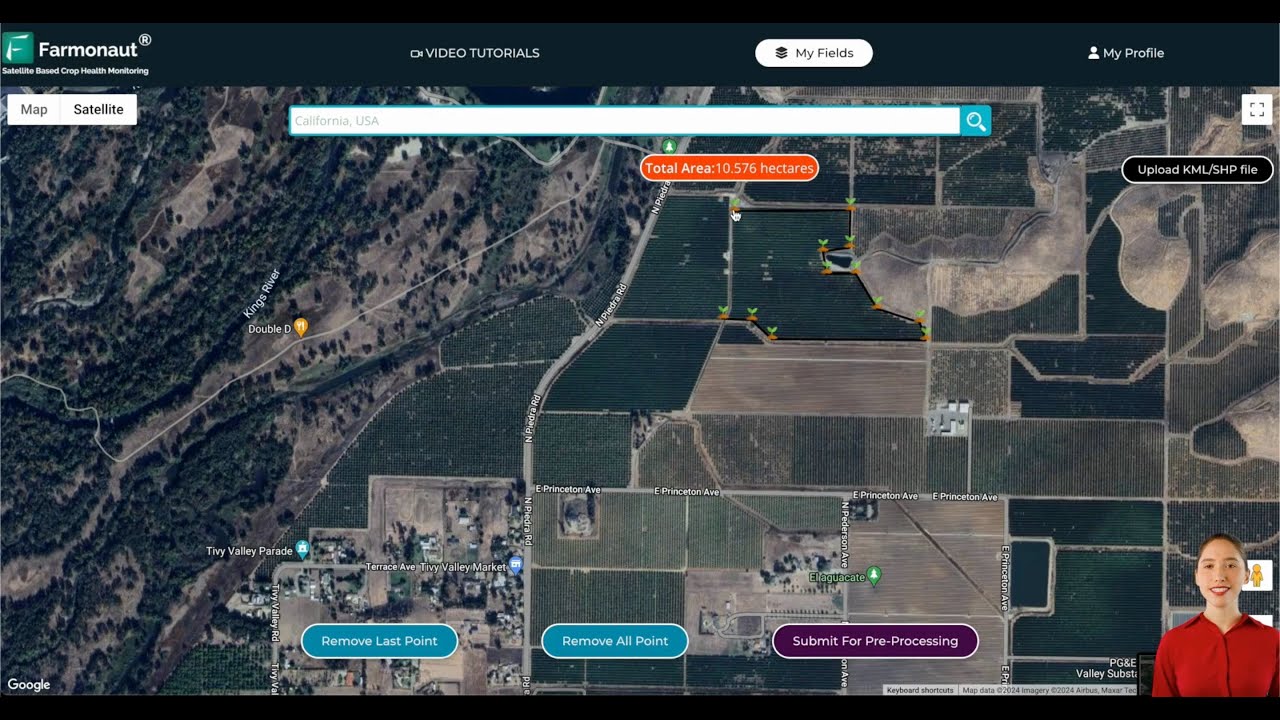Sustainable Farming: Harnessing Bats for Natural Pest Control in North American Agriculture
“A single bat can consume up to 1,000 insects per hour, significantly reducing crop damage in agricultural fields.”
Welcome to the fascinating world of sustainable farming and natural pest control! In this comprehensive blog post, we’ll explore how our nocturnal allies, bats, play a crucial role in maintaining healthy ecosystems and supporting agriculture across North America. As we delve into the importance of these remarkable creatures, we’ll uncover innovative strategies for harnessing their natural habits to protect crops and promote biodiversity on our farms and in our gardens.

The Power of Bats in Agriculture
Bats are often misunderstood creatures, but they are, in fact, incredible allies for farmers and gardeners alike. These small but mighty mammals are voracious insect consumers, capable of eating hundreds of crop-damaging pests every hour. Their nocturnal feeding habits make them particularly effective in controlling insects that are active at night, many of which are significant agricultural pests.
In North America, we are fortunate to have a diverse range of bat species that contribute to natural pest control. From the Mexican free-tailed bat in the southern United States to the little brown bat found across Canada and the northern U.S., these beneficial species play a vital role in our agricultural ecosystems.
Ecological Benefits of Bats in Farming
The ecological benefits of bats in farming extend far beyond simple pest control. By reducing the need for chemical pesticides, bats help maintain a healthier balance in our agricultural environments. This natural approach to pest management supports biodiversity, protects beneficial insects like pollinators, and contributes to overall soil health.
- Reduced pesticide use
- Increased crop yields
- Improved soil quality
- Enhanced biodiversity
Moreover, the presence of bats in agricultural areas can lead to significant economic savings. It’s estimated that bats save billions of dollars annually in crop damage and reduced pesticide use across North America. This makes them not only ecologically important but also economically valuable allies for farmers.
Bat Species and Their Agricultural Benefits
| Bat Species Name | Geographic Range | Primary Prey Insects | Estimated Insects Consumed per Hour | Crop Types Protected | Potential Annual Savings for Farmers (USD) |
|---|---|---|---|---|---|
| Mexican Free-tailed Bat | Southern U.S. to Central America | Moths, beetles, flying ants | Up to 1000 | Cotton, corn, pecans | $740 million |
| Big Brown Bat | North America (widespread) | June bugs, cucumber beetles | 600-800 | Various vegetables, grains | $3.7 billion |
| Little Brown Bat | Canada and Northern U.S. | Mosquitoes, midges | 500-600 | Various crops, orchards | $1.2 billion |
| Eastern Red Bat | Eastern North America | Moths, true bugs | 400-500 | Soybeans, corn | $520 million |
| Hoary Bat | North and South America | Large moths, beetles | 300-400 | Forestry, orchards | $450 million |
As we can see from this table, different bat species offer unique benefits to various agricultural sectors across North America. Their combined efforts in pest control translate to substantial economic savings and ecological advantages for farmers and the environment alike.
Innovative Pest Control Strategies Using Bats
Harnessing the natural habits of bats for pest control requires innovative strategies that promote both wildlife habitat preservation and effective crop protection. Here are some cutting-edge approaches farmers and gardeners can implement:
- Bat Houses: Installing bat houses on farmsteads and near crop fields provides roosting sites for bats, encouraging them to stay in the area and feed on local insect populations.
- Habitat Corridors: Creating and maintaining natural corridors between bat roosting sites and feeding areas ensures bats can easily access crops that need protection.
- Night-Blooming Plants: Incorporating night-blooming plants in and around fields attracts night-flying insects, which in turn attract bats to the area.
- Water Sources: Providing clean water sources near fields can attract bats and support their hydration needs during nightly feeding sessions.
By implementing these strategies, farmers can create a more bat-friendly environment that naturally supports pest control efforts. This approach not only benefits agricultural production but also contributes to the conservation of these important species.
Dispelling Myths About Bats
Despite their significant contributions to agriculture and ecosystem health, bats often face misconceptions that can hinder conservation efforts. Let’s address some common myths:
- Myth: All bats carry rabies.
Fact: Less than 1% of bats carry rabies, and they’re not aggressive towards humans. - Myth: Bats will fly into your hair.
Fact: Bats have excellent echolocation and avoid contact with humans. - Myth: Bats are blind.
Fact: Bats can see and have highly developed senses for night navigation.
By understanding the truth about bats, we can better appreciate their role in our agricultural systems and work towards their conservation.
Creating Bat-Friendly Environments
To encourage bats to take up residence near our farms and gardens, we need to create environments that meet their needs. Here are some tips for creating bat-friendly spaces:
- Preserve old trees and snags that provide natural roosting sites
- Minimize outdoor lighting, which can disorient bats
- Plant native species that support insect populations bats feed on
- Avoid using pesticides that can harm bats and their insect prey
By implementing these practices, we not only support bat populations but also contribute to overall biodiversity and ecosystem health on our farms.

The Role of Technology in Sustainable Farming
While bats provide incredible natural pest control services, modern technology can complement these efforts to create even more effective and sustainable farming practices. Platforms like Farmonaut offer innovative solutions that can enhance our ability to manage crops and protect them from pests.
Farmonaut’s satellite-based crop health monitoring system allows farmers to track vegetation health, soil moisture levels, and other critical metrics in real-time. This data can help identify areas where pest pressure might be high, allowing for targeted interventions that complement the natural pest control provided by bats.
To learn more about how technology can support sustainable farming practices, check out Farmonaut’s services:
For developers interested in integrating Farmonaut’s data into their own systems, check out the API and API Developer Docs.
Bat Conservation Techniques for Farmers
Farmers play a crucial role in bat conservation efforts. By implementing bat-friendly practices on their land, they not only benefit from natural pest control but also contribute to the preservation of these important species. Here are some conservation techniques farmers can adopt:
- Preserve Natural Habitats: Maintain areas of natural vegetation, including forests and wetlands, which provide crucial roosting and foraging habitats for bats.
- Create Artificial Roosts: Install bat houses in strategic locations around the farm to provide additional roosting options.
- Implement Integrated Pest Management (IPM): Use a combination of biological, cultural, and chemical controls to manage pests while minimizing harm to bats and other beneficial species.
- Protect Water Sources: Maintain clean, accessible water sources on the farm, as bats require water for drinking and foraging.
- Educate Farm Workers: Provide information to farm workers about the benefits of bats and the importance of their conservation.
“Bats’ natural pest control services potentially save billions of dollars annually in agricultural losses across North America.”
The Importance of Bats in Different Agricultural Sectors
Bats play vital roles across various agricultural sectors in North America. Let’s explore how these nocturnal allies benefit different types of farming:
Row Crops
In corn and soybean fields, bats prey on moths that lay eggs for destructive caterpillars like corn earworms and armyworms. Their nightly feedings can significantly reduce crop damage and the need for pesticides.
Orchards
Fruit bats help control insects that damage apple, peach, and other fruit trees. They also assist in seed dispersal, promoting biodiversity in and around orchards.
Vineyards
Grape growers benefit from bats’ appetite for grape berry moths and other vineyard pests, helping to protect valuable wine crops.
Organic Farming
For organic farmers who avoid synthetic pesticides, bats are particularly valuable allies in natural pest management strategies.
By understanding the specific benefits bats bring to different types of agriculture, farmers can better appreciate and support these beneficial species on their land.
Seasonal Considerations for Bat-Friendly Farming
Bats’ behaviors and needs change throughout the year, and farmers can adjust their practices accordingly to support these beneficial creatures:
- Spring: As bats emerge from hibernation or return from migration, ensure that roosting sites are available and undisturbed.
- Summer: Protect maternity colonies by avoiding disturbances to known roost sites during the breeding season.
- Fall: Maintain food sources as bats prepare for hibernation or migration by allowing some crop residues to remain in fields.
- Winter: Protect hibernation sites and avoid disturbing hibernating bats.
By considering these seasonal aspects, farmers can create year-round support for bat populations on their land.
Monitoring and Research: Understanding Bat Populations
To effectively harness bats for natural pest control, it’s crucial to understand their populations and behaviors. Farmers can contribute to this knowledge by participating in monitoring programs and supporting research efforts:
- Acoustic Monitoring: Use bat detectors to record echolocation calls and identify species present on the farm.
- Roost Counts: Conduct regular counts of bats at known roost sites to track population trends.
- Collaborate with Researchers: Partner with local universities or wildlife organizations to participate in bat research projects.
- Citizen Science: Contribute observations to national databases like the North American Bat Monitoring Program (NABat).
By engaging in these monitoring and research activities, farmers not only gain valuable insights into the bat populations on their land but also contribute to broader conservation efforts.
Challenges and Solutions in Bat-Friendly Farming
While the benefits of incorporating bats into agricultural pest management are clear, farmers may face some challenges in implementing bat-friendly practices. Here are some common issues and their solutions:
- Challenge: Concern about bats roosting in farm buildings.
Solution: Install external bat houses to provide alternative roosting sites. - Challenge: Fear of disease transmission.
Solution: Educate farm workers about the low risk and proper safety precautions when handling bats. - Challenge: Balancing bat conservation with crop protection.
Solution: Implement integrated pest management strategies that complement bat activities.
By addressing these challenges proactively, farmers can successfully integrate bat-friendly practices into their operations.
The Future of Bat-Assisted Agriculture
As we look to the future of sustainable farming, the role of bats in natural pest control is likely to become even more significant. Climate change and habitat loss pose threats to bat populations, making conservation efforts crucial. At the same time, advancements in technology and research are opening new possibilities for leveraging bats in agriculture:
- Development of more effective bat house designs
- Improved understanding of bat foraging patterns and preferences
- Integration of bat activity data with precision agriculture technologies
- Exploration of bat-friendly lighting solutions for farms
By staying informed about these developments and continuing to support bat conservation, farmers can position themselves at the forefront of sustainable agricultural practices.
Conclusion: Embracing Bats as Agricultural Allies
As we’ve explored throughout this blog post, bats are invaluable allies in sustainable farming practices across North America. From their voracious appetite for crop-damaging insects to their role in promoting biodiversity, these nocturnal creatures offer tremendous benefits to farmers and gardeners alike.
By implementing bat-friendly practices, such as providing roosting sites, preserving natural habitats, and reducing pesticide use, we can harness the power of these natural pest controllers while contributing to their conservation. The economic savings and ecological benefits of integrating bats into our agricultural systems are substantial and far-reaching.
As we move towards more sustainable and environmentally conscious farming methods, let’s remember to look up and appreciate the silent partners flying overhead. By working in harmony with bats and other beneficial species, we can create resilient, productive, and ecologically balanced agricultural landscapes for generations to come.
FAQs
- Q: Are bats dangerous to humans or livestock?
A: Generally, bats pose little danger to humans or livestock. While some bats can carry diseases, instances of transmission are rare, especially when proper precautions are taken. - Q: How can I attract bats to my farm or garden?
A: Install bat houses, maintain water sources, plant night-blooming flowers, and reduce pesticide use to create a bat-friendly environment. - Q: Do bats eat beneficial insects too?
A: While bats may consume some beneficial insects, their overall impact on pest control far outweighs any negative effects on beneficial insect populations. - Q: How long does it take for bats to colonize a new bat house?
A: It can take anywhere from a few months to a couple of years for bats to inhabit a new bat house, depending on factors like location and local bat populations. - Q: Can bats replace chemical pesticides entirely?
A: While bats provide significant pest control, they are most effective as part of an integrated pest management strategy that may include other methods of control.




















